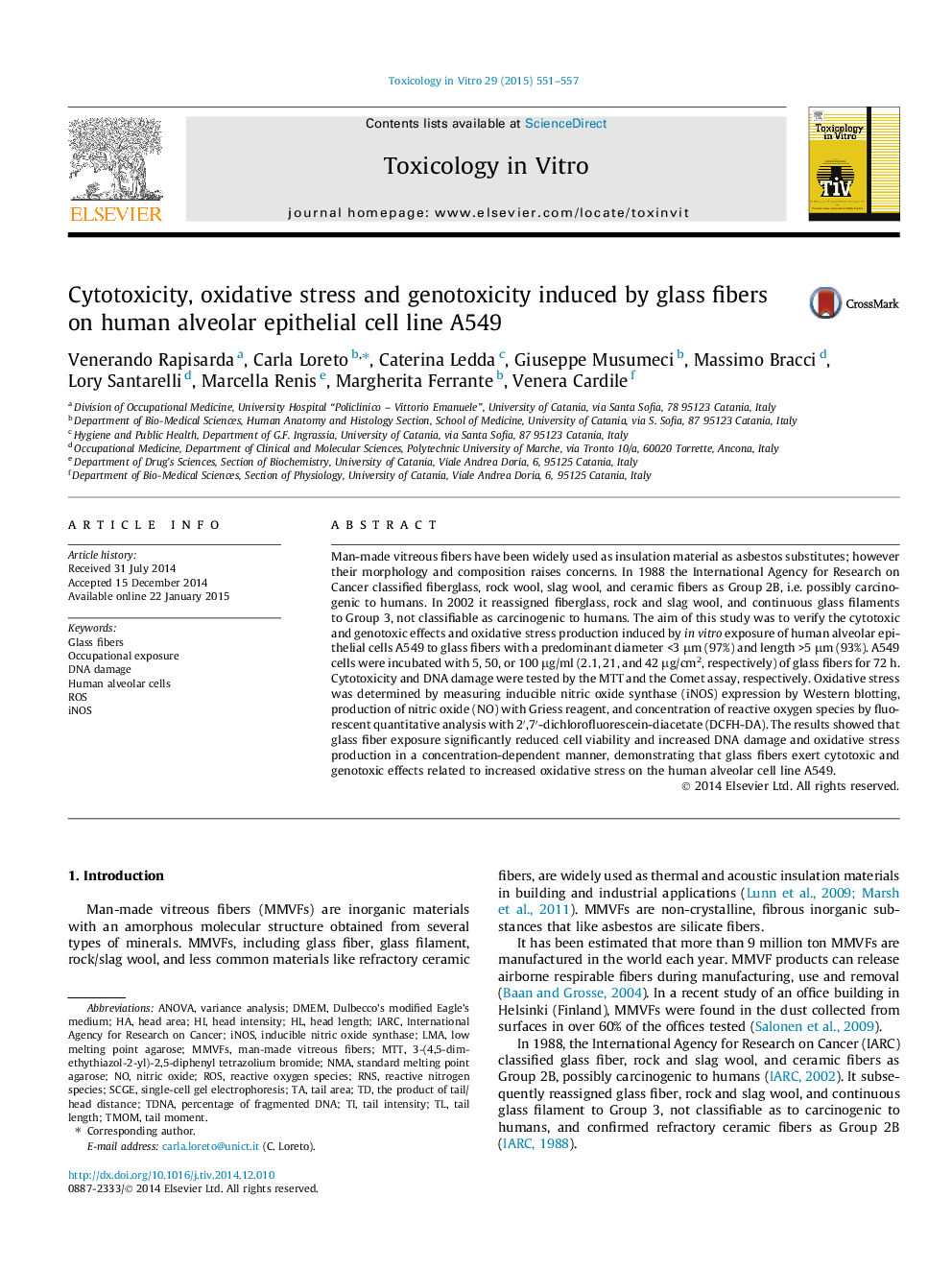| Article ID | Journal | Published Year | Pages | File Type |
|---|---|---|---|---|
| 2602488 | Toxicology in Vitro | 2015 | 7 Pages |
•Cytotoxic, genotoxic and oxidative stress effects of glass fibers are assessed in A549 cell line.•Cell proliferation and DNA damage are tested by MTT assay and Comet assay, respectively.•Fibers exert cyto-genotoxic effects in concentration-dependent manner to oxidative stress.
Man-made vitreous fibers have been widely used as insulation material as asbestos substitutes; however their morphology and composition raises concerns. In 1988 the International Agency for Research on Cancer classified fiberglass, rock wool, slag wool, and ceramic fibers as Group 2B, i.e. possibly carcinogenic to humans. In 2002 it reassigned fiberglass, rock and slag wool, and continuous glass filaments to Group 3, not classifiable as carcinogenic to humans. The aim of this study was to verify the cytotoxic and genotoxic effects and oxidative stress production induced by in vitro exposure of human alveolar epithelial cells A549 to glass fibers with a predominant diameter <3 μm (97%) and length >5 μm (93%). A549 cells were incubated with 5, 50, or 100 μg/ml (2.1, 21, and 42 μg/cm2, respectively) of glass fibers for 72 h. Cytotoxicity and DNA damage were tested by the MTT and the Comet assay, respectively. Oxidative stress was determined by measuring inducible nitric oxide synthase (iNOS) expression by Western blotting, production of nitric oxide (NO) with Griess reagent, and concentration of reactive oxygen species by fluorescent quantitative analysis with 2′,7′-dichlorofluorescein-diacetate (DCFH-DA). The results showed that glass fiber exposure significantly reduced cell viability and increased DNA damage and oxidative stress production in a concentration-dependent manner, demonstrating that glass fibers exert cytotoxic and genotoxic effects related to increased oxidative stress on the human alveolar cell line A549.
